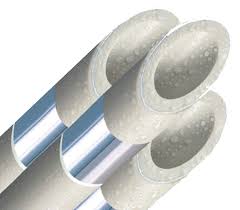Sep . 21, 2024 17:18 Back to list
hdpe pipe to pvc pipe connection products
Connecting HDPE and PVC Pipes A Comprehensive Guide
In the world of plumbing and piping systems, the connection between different pipe materials is often necessary. One common pairing involves High-Density Polyethylene (HDPE) and Polyvinyl Chloride (PVC) pipes. Both materials have unique properties that make them suitable for various applications, but when it comes to making a connection between the two, it’s essential to understand the best practices and available products.
Properties of HDPE and PVC
HDPE is known for its flexibility, chemical resistance, and durability. It is often used in water supply systems, agricultural applications, and other scenarios that require resilience. Its capability to withstand high pressure makes it ideal for transporting fluids in various environmental conditions.
PVC, on the other hand, is widely recognized for its rigidity and ease of installation. It is typically used in drainage, waste, and vent systems. While it boasts a great deal of strength, it does not have the same level of flexibility as HDPE, making connections between the two materials an important consideration in pipeline design.
Connection Methods
Connecting HDPE and PVC pipes requires careful attention to joint compatibility. The following methods are commonly employed
1. Mechanical Fittings These are among the most popular options for connecting HDPE to PVC. Mechanical fittings use clamps, screws, or bolts to create a secure connection. They are relatively easy to install and are often used in applications where disassembly may be required.
hdpe pipe to pvc pipe connection products

2. Transition Fittings Transition fittings are specifically designed to connect two different materials. These fittings have an inner section compatible with one material and an outer section compatible with another. Manufacturers provide various transition fittings for connecting HDPE to PVC, ensuring that the specification meets industry standards.
3. Fusion Welding For more permanent connections, fusion welding may be used for HDPE, while solvent welding is typically used for PVC. However, care must be taken as these two methods cannot be directly combined. It’s essential to ensure that the fusion joint on the HDPE side is properly made before attaching the PVC side with an appropriate mechanical or transition fitting.
4. Adhesive Solutions Some products are specifically designed to bond PVC to HDPE. These adhesives can provide a strong seal when used correctly, but they may not offer the same durability as mechanical or transition fittings.
Considerations
When connecting HDPE and PVC pipes, several considerations should be taken into account
- Pressure Ratings Ensure that both pipe materials meet the pressure ratings needed for the application to prevent leaks or system failures. - Environmental Factors Consider the environmental conditions, such as temperature fluctuations and exposure to chemicals, which could affect the longevity of the connection. - Installation Standards Follow local codes and standards to ensure a safe and reliable connection. This may involve consulting with local authorities or engineering professionals.
Conclusion
The connection between HDPE and PVC pipes is crucial in many applications, providing a pathway for fluid transport across different materials. By understanding the properties of each pipe type and selecting the appropriate connection method, you can ensure a reliable and effective piping system. Always consult professionals when in doubt, to utilize the best practices for your specific project.
-
High-Quality PVC Borehole Pipes Durable & Versatile Pipe Solutions
NewsJul.08,2025
-
High-Quality PVC Perforated Pipes for Efficient Drainage Leading Manufacturers & Factories
NewsJul.08,2025
-
High-Quality PVC Borehole Pipes Durable Pipe Solutions by Leading Manufacturer
NewsJul.08,2025
-
High-Quality PVC Borehole Pipes Reliable PVC Pipe Manufacturer Solutions
NewsJul.07,2025
-
High-Quality UPVC Drain Pipes Durable HDPE & Drain Pipe Solutions
NewsJul.07,2025
-
High-Quality Conduit Pipes & HDPE Conduit Fittings Manufacturer Reliable Factory Supply
NewsJul.06,2025

